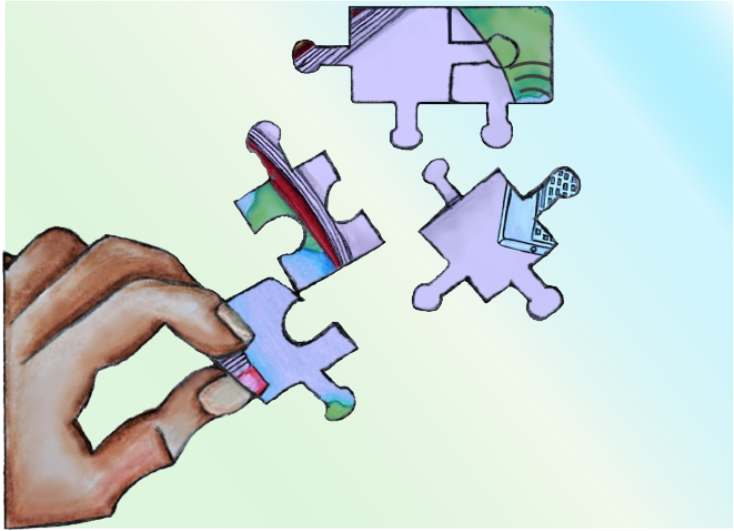What We’re Good At
Popular wisdom in public health is that if health information is understandable (clear & simple), accurate, trustworthy & actionable, then a healthier, safer and more equitable society will result.
But over the last 25 years many professionals have approached reaching these goals by narrowly defining humans and their capacities. True – there are a lot of moving parts to communicating with patients and the public – so too often competing interests. But We, at the Lab, are convinced that no less than 3 important things caused and keep the narrow view alive:
- The medical field is very hierarchical – and autonomous; unlike the humanities, interdisciplinarity is not rewarded. ( this IS changing);
- As with most things, simple solutions get a lot of traction, they’re easily replicated and disseminated;
- There haven’t been strong enough voices heard for expanding and re-thinking health literacy & how we achieve advancing people’s health literacy.
We know that’s a provocative statement. But we stand behind it 100%. At the Lab we hope to demonstrate the all of our work is infused with the determined aspiration that good theory and emerging knowledge about how people make meaning must be central to approaching how we communicate health and science in this complex society.

The Lab Team
The Founder of the Lab, Christina Zarcadoolas, PhD. I’ve been studying and teaching about public understanding of health and science for 4 decades. I am the lead author of Advancing Health Literacy:A Framework for Understanding and Action (with Andrew Pleasant, PhD., Dr. David S. Greer, Jossey-Bass/Wiley 2006), called “required reading” for public health communication professionals by The New England Journal of Medicine.
PhD. I’ve been studying and teaching about public understanding of health and science for 4 decades. I am the lead author of Advancing Health Literacy:A Framework for Understanding and Action (with Andrew Pleasant, PhD., Dr. David S. Greer, Jossey-Bass/Wiley 2006), called “required reading” for public health communication professionals by The New England Journal of Medicine.
My faculty appointments have included, Brown University, Mount Sinai School of Medicine, City of University NY Anthropology Dept., and CUNY School of Public Health.
I’m presently writing a new book, The Simplicity Complex: Why Our Health and Safety Lie in the Balance, exploring the roles and limits of simplicity in a complex world.
Routinely Doing Health Literacy Audits
Whether it’s print, oral communication, interactive multi-media and e-communication
there is no way around the need to unpack a text to know what will make it optimally usable by a target audience.
A Theory Driven Approach to Language & Concepts
We focus on achieving the balance between complexity and simplicity.
We start with credible scientific and health information,
adapt it to be conceptually accessible,
linguistically and culturally appropriate and in a medium that makes sense for the audience/users.
A Word on Readability Formulas
Although the 2004 Institute of Medicine (IOM) report,
“Health Literacy: A Prescription to End Confusion” called for
researchers and practitioners to move beyond relying on reading
level and to find newer frameworks to think about health literacy
(Nielsen-Bohlman et al., 2004), unfortunately reading level
and readability formulas are ubiquitous and persistent in the field of health literacy.
Many materials developers rely on them as the primary way to determine how “readable” a document is.
At the Lab we are perfectly clear about the place for readability formulas: we don’t use them. Here’s why:
 1. The formulas were generally developed back in the 70s, (Flesch-Kincaid and others) and they were never meant to be used to replace good analysis of the language and structure of writing when you want to figure out how simple or complex a document/message was. in 1974, Flesch himself a said he hoped users “won’t take the formula too seriously and won’t expect from it more than a rough estimate.”
1. The formulas were generally developed back in the 70s, (Flesch-Kincaid and others) and they were never meant to be used to replace good analysis of the language and structure of writing when you want to figure out how simple or complex a document/message was. in 1974, Flesch himself a said he hoped users “won’t take the formula too seriously and won’t expect from it more than a rough estimate.”
2) Many rely on these formulas to meet the requirement to use x or y reading (grade) level – a direction that itself needs more critical examining.
3) Readability formulas have become a habit that too often can wind up yielding dull, artificially restricted language.Users of these formulas, inadvertently are deciding what someone should be allowed to learn by reading.Forget about engaging the reader, creating interest and fostering active thinking.
4) Reading experts have demonstrated for decades that the remarkable act of reading involves many more moving parts than processing a string of words.Have you ever wondered why most textbook publishers don’t use readability scores?
5) Often the “simplified” text looks simpler, but when tested, is actually not more understandable. In fact, classic reading studies have demonstrated that readers often have a harder time understanding and making connection with simplified texts (Charrow & Charrow, 1979; Davison et al., 1980; Duffy & Kabance, 1982; McNamara, Kintsch, Butler-Songer, & Kintsch, 1996; Kintsch, 1994).
6) The truth is Reading short words are not always easy to understand and long sentences aren’t always hard to understand. “The word “waive” as in “We will waive your premium” counts exactly the same on a Flesch test as “we,” “will,” and “your” (Redish & Seizer, 1985).
7) Reading formulas are a poor substitute for figuring out what really makes a text/or message hard/ easy to read and understand. HINT it’s often the concepts and the complex structure of sentences (clauses, confusing reference, etc) not necessarily a word or sentence length.
Writing to reading scores! We can do better
When we choose to write to meet grade level/ readability criteria we’re caught in a Catch-22.
We often wind up gaming the system – artificially dividing sentences and
using sentence fragments to get to the prescribed “reading level.”
If we add the very words or sentences that would make the text
really more comprehensible (understandable) we wind up increasing
the readability score of the material! So we write what scores better – often
short sentences, without much cohesion, seldom introducing the vocabulary and
concepts people need to truly understand, learn and use health information.
Ancker (2004) cleverly demonstrates this: “Be prepared to die next month,”
scores lower (easier-to-read) than “Call for an appointment next month”
because the words in the latter are shorter.
As you review lessons in the Lab Library take note of all the
ways we talk about simple and complex, and never talk about readability formulas.